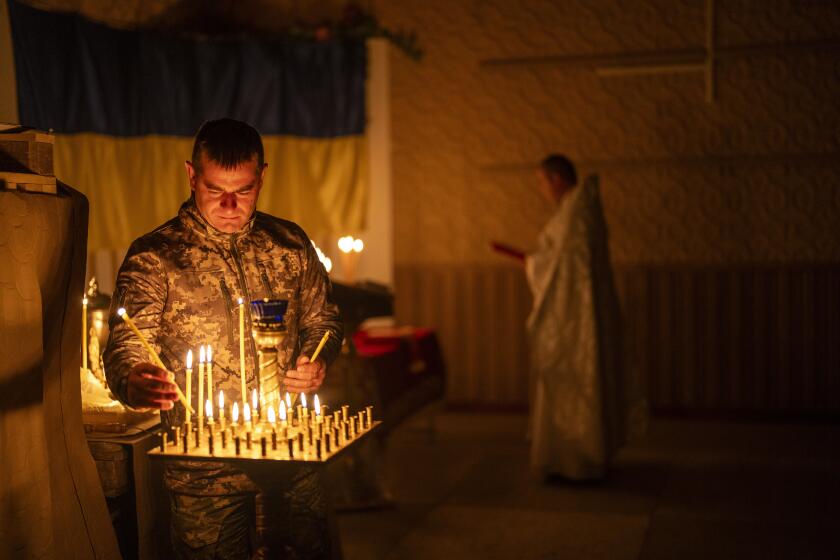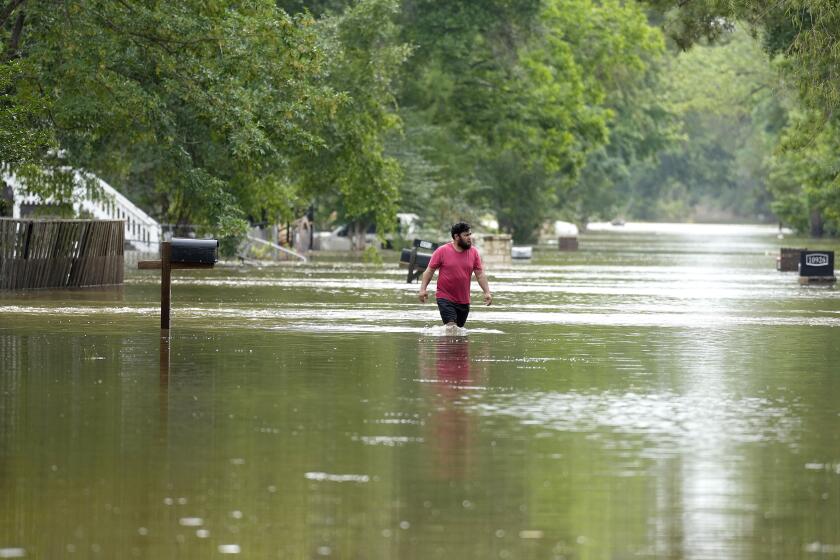2 die as avalanche hits snowmobile rally in Canada
At least two people were killed and 30 injured after a massive avalanche smothered a high-risk snowmobile rally in southern British Columbia, police said Sunday.
“It’s certainly a small miracle that we didn’t end up with a complete, massive group buried under the snow,” said Cpl. Dan Moskaluk of the Royal Canadian Mounted Police. Most of the estimated 200 spectators and participants were accounted for, he said.
An avalanche 150 yards wide and as much as 1.6 miles long thundered down a steep snow bowl at the Canadian Rocky Mountain resort of Revelstoke, where competitors were attempting to scale the treacherous slope on high-powered snow machines during an unsanctioned rally Saturday afternoon.
“From the information that we have, it was triggered by the snowmobilers,” said Greg Johnson, forecaster at the Canadian Avalanche Center in Revelstoke. “It swept over lots and lots of snowmobiles, trees. It is a very large avalanche, and there is debris everywhere.”
Canadian officials in recent years have been confronted with an increasing number of avalanche deaths, often among snowmobilers who authorities say are using ever-more-powerful machines to ascend steep slopes, often in unstable snow conditions.
There have been four avalanche fatalities this season. Last year 26 died, prompting the center to warn, in a report called “The Year of Sledding Dangerously,” that snowmobilers had been largely ignoring warnings to avoid steep, unstable slopes in the mountainous area.
The report said officials had had little success in getting snowmobilers to heed their warnings so they had begun directing them to wives and mothers. Accident investigations had demonstrated “some stunningly aggressive terrain choices,” it said. “It’s hard to watch as the same avalanche accident scenario unfolds again and again.”
Unusual weather conditions this month were “unprecedented,” prompting the issuance of special avalanche warnings each weekend for several weeks. “We’ve never done that before,” Johnson said.
A relatively dry, low-snowfall winter allowed a number of weaknesses to form in the upper portion of the snowpack, he said. That was followed by a strong storm Thursday and Friday. “The snow that fell overloaded those weaknesses in the snowpack and created a generally unstable situation,” he said.
Participants had gathered for the annual, unofficial Big Iron Shootout rally in an area of remote Boulder Mountain known as the Turbo Bowl. The event has drawn criticism from other snowmobiling groups for its riskiness.
“It’s essentially high marking, which refers to these individuals with the high-powered, custom snowmobiles who ascend very steep inclines to get as close to the top, or up to the top,” Moskaluk said.
Rescuers with radio beacons, poles and dogs were continuing to comb the mountain, but a door-to-door survey at the resort revealed that most of the participants and spectators had been accounted for.
Nineteen of the 30 injured had been treated and released at the local hospital; one person was in critical condition.
The number of fatalities might have been higher, but many participants appeared to have had self-rescue equipment, which can include search probe sticks, air bladders and global positioning system locater beacons.
“Some of them had some of that equipment,” Moskaluk said. “It’s difficult to say, but we’re confident enough to say that a high percentage of the persons are accounted for.”
More to Read
Start your day right
Sign up for Essential California for news, features and recommendations from the L.A. Times and beyond in your inbox six days a week.
You may occasionally receive promotional content from the Los Angeles Times.






